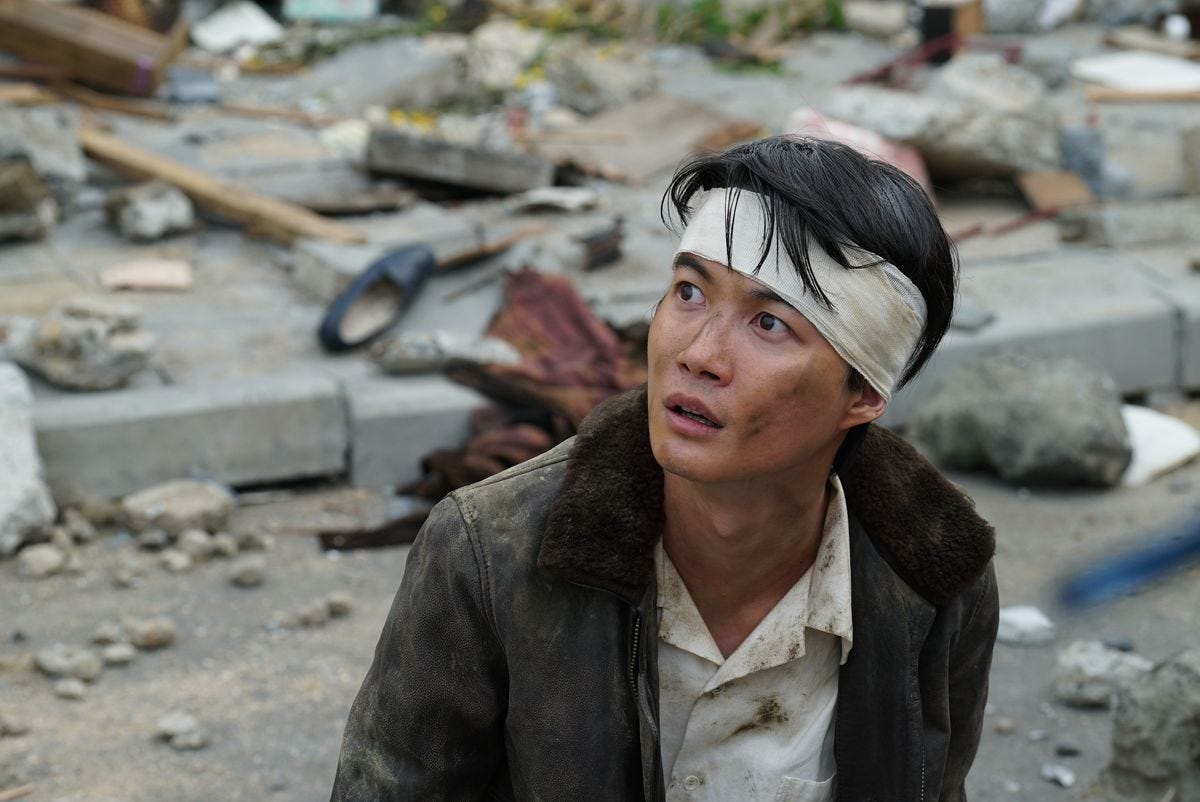There’s something about giant monster movies that have never resonated with me. The classic ones are insanely silly and the newer ones feed into a universal obsession with making violence and disaster synonymous with cool. Coming from a fan of comic books and superhero movies, you may find this ironic, but, before you dismiss what I have to say, just know that my least favorite hero moments are when destruction serves no purpose other than showcasing action. Much of the Monsterverse films by Legendary (Godzilla, Kong: Skull Island, King of the Monsters, Godzilla vs. Kong) emphasize horribly boring and overtly sci-fi human centered stories where the entire planet is destroyed and then people cheer. I’ve discovered that these movies can be much more than how they’ve been crafted over the last decade. On top of that, because of the declining want for franchise media, there’s a market for fresh theatrical experiences.
Godzilla Minus One is the latest Godzilla installment from the owner of the famous monster, Toho Company. Most certainly a purposeful departure from what Legendary is doing with the character in the U.S., this Godzilla returns to the root of the original story — Godzilla devastating Japan in the aftermath of WWII. This isn’t the Godzilla who’s on the side of humans, this one is going to kill every single person it sees. Therefore, the human story is a very important backbone of the film, delivering a grounded and emotional group of characters for the audience to connect with.

This is without a doubt the greatest human story that I’ve ever seen in a Godzilla movie, or any monster movie for that matter. Koichi, a WWII kamikaze pilot stricken by PTSD, survived an attack by Godzilla before the end of the war. The first time he encountered the monster was before radiation stunted Godzilla’s growth and gave him incredibly destructive powers. Now, returning to a devastated home to discover his parents are dead, Koichi must live with his failure to do his duty and the cowardice everyone bestows upon him. That constant negativity is alleviated by a young girl, Noriko, and the baby that she promised the now dead mother to take care of. This unlikely family forges ahead as best they can into the rebuilding era of Japan.
All of this ground work takes place across the first 30-45 minutes of the film, but the threat of Godzilla is still on the horizon. As mentioned earlier, placing the film after WWII brings the franchise back to its roots by exploring the impact the devastation of Japan had on the psyche of its citizens. In a world where weapons could now level cities, what could that power do to the world around them, and what residual effects would this have on their future despite the war being over. It makes Godzilla’s first reemergence a tension driven horror ride, and one of the most creative set pieces with the character ever.
Koichi, now working on a small boat, disarms leftover underwater munitions with a tight knit crew. Asked to investigate the destruction of a larger ship, Koichi once again comes face-to-face with Godzilla, being chased through the ocean in a scene that feels ripped out of everyone’s worst nightmare. That chase, culminating in the destruction of a large military vessel, is just a taste of the power Godzilla has, despite implying that his powers have grown since Koichi first saw him. The enticing and emotional human element in the film adds delicious agony to the monster’s inevitable destruction of a major city. That destruction switching the tone from serious drama to the campy horror the franchise is known for, all the way down to an atomic beam that feels like it has real weight behind it.
Godzilla Minus One is a really great trip to the movies. While I don’t agree with the overarching praise I’ve seen, calling it the best movie in years and easily the best of this year, I totally get the appeal behind it. I was consistently moved by the characters we were given for this story and sitting with nervous tension during every interaction with Godzilla. The ocean chase and the final confrontation with Godzilla are easy standouts in the film, with these set pieces having more creativity and tangible explanation than most blockbuster action films lately. If the success of this means anything, it’s that audiences are open to a higher quality action movie with an emphasis on emotion over comedy.




